This is the ultimate guide to vegan muffins. The one and only muffin guide you will ever need to bake those perfectly moist and fluffy muffins with a tall chubby muffin top. You can go straight to the kitchen and get baking as soon as you finish reading this guide.
*This post may contain affiliate links. For full disclosure visit our Affiliate Disclosure page.
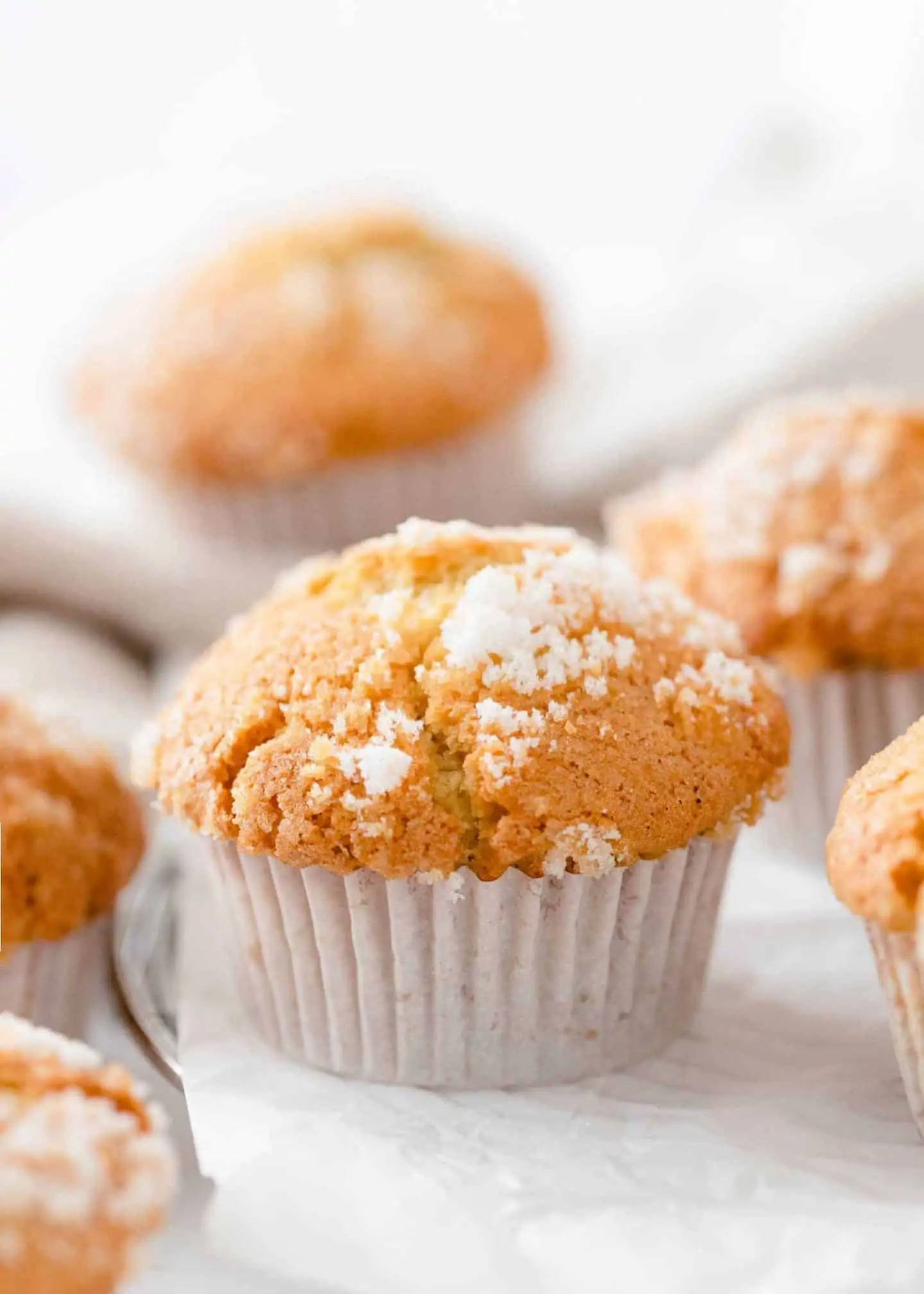
The only muffin guide you need to read
Muffins have a special place in my heart, not only because of how scrumptious they are but because they were my first baking success on my very first attempt to bake muffins. I always made at least one failed batch every time I baked something new when I first started baking – be it pancakes, cakes, scones… but out of all of them, I baked perfect muffins on my first ever try! This was all due to this one thing I did – I followed exactly what was written in the instructions of the baking book I had back then.
The book is now sitting on the shelf of my friend’s house in Portugal (a long story for another time) but I still remember what the book taught me about making perfect muffins and I still use those same tips to this day. Full disclosure, I wasn’t vegan at that time so the muffin recipes in the baking book had eggs and milk in all of them, so after I started my vegan baking journey I experimented so many times to create that soft, fluffy and moist texture resulting in the perfectly tall and chubby muffin top with plant ingredients.
To me, the tall and chubby muffin top is super important in muffins, after all, muffin tops exist for muffins, don’t they? If you are reading this article, I imagine you have come here to achieve your perfect vegan muffins, and I’m here to help you! By the time you finish reading this guide you will be transformed into a confident muffin baker well on your way to baking the perfect muffins in your very own kitchen. Let’s get started!
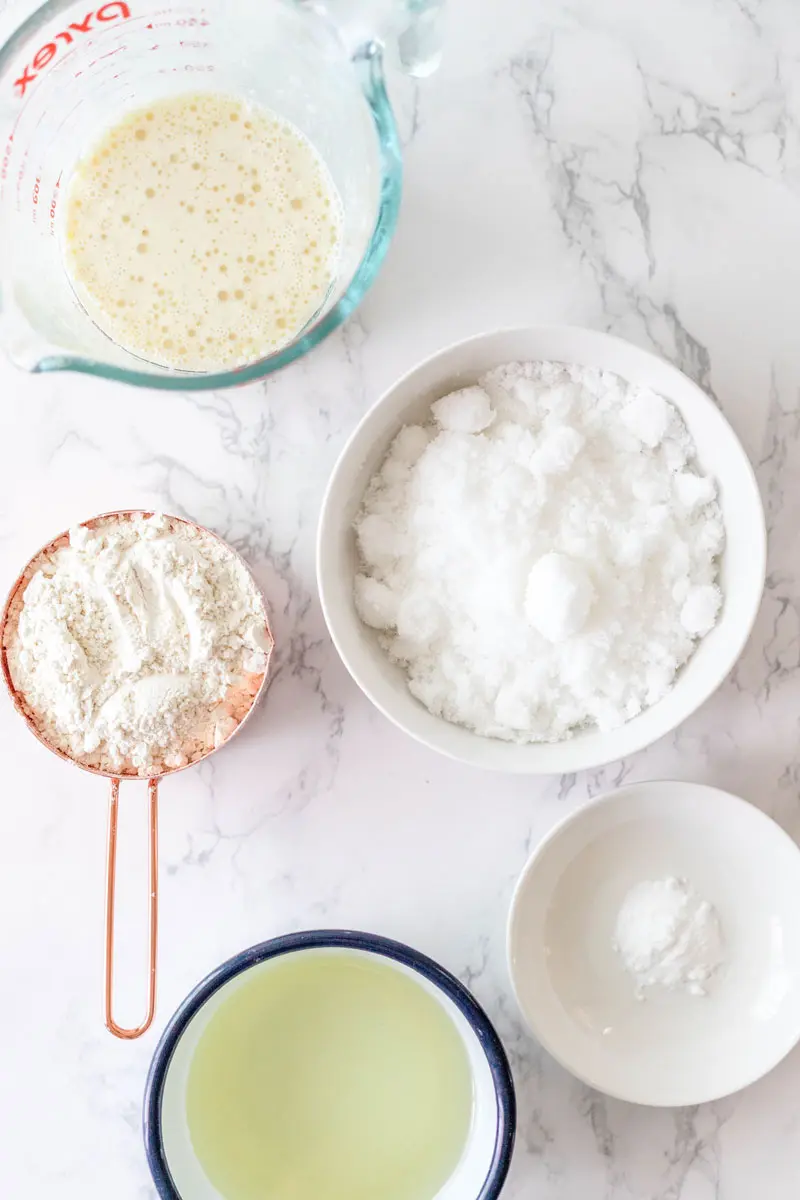
Basic ingredients
Baking muffins with only plant ingredients is probably new to some of you. But don’t get intimidated! It’s actually super simple. Here are the basic ingredients we need to make perfect muffins.
- Flour – For most of us, the most common and easy to purchase flour is plain flour. It’s versatile, can be used in pretty much any baked goods and is easy to use if you are new to baking.
- Sugar – There are many types of sugar in the supermarket. Regular white sugar is most common and it gives baked goods nice sweetness, and brown sugar gives baked goods more moisture.
- Oil – Oil is used in most muffins recipes. You can use vegetable oils such as canola oil or use melted vegan butter too.
- Plant milk – My go-to plant milk is soy milk. You can also use almond milk, oat milk etc. Choose your favourite plant milk.
- Baking powder – Baking powder is a leavening agent in muffins. You can also use baking soda along with baking powder to help raise the muffins more.
*I use bone char-free sugars for all of my recipes. I cover the topic in my article Vegan Baking 101. Go to the “Is sugar vegan?” section to learn more!
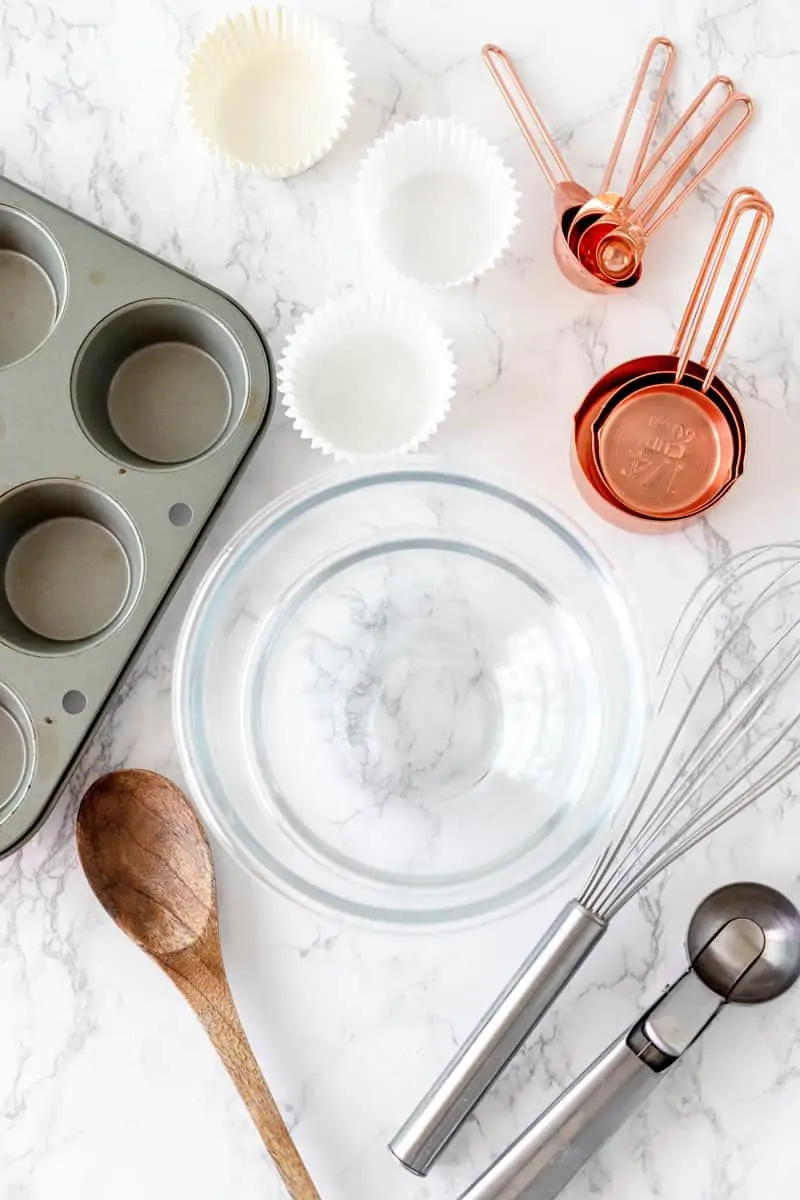
Basic tools
- Mixing bowl – You need one big mixing bowl to make your muffin batter. Bigger is better than small as it’s easier to mix the batter with a large wooden spoon. I use a 20 cm wide, 2000ml size mixing bowl!
- Whisk – A balloon whisk is needed to thoroughly mix dry ingredients. I use a large metal whisk to mix my dry ingredients well.
- Wooden spoon – When mixing the muffin batter, a large wooden spoon is a must. It does the perfect job of mixing gently without developing too much gluten.
- Muffin tray – I have a muffin tray that can bake 9 muffins in it. Depending on the size of your oven you can also buy 6 as well.
- Muffin cups – Make sure you have muffin cups that fit in the size of the muffin tray! Most should fit but this one time I bought way smaller muffin cups that didn’t fit in my muffin tray.
- Ice cream scoop – An ice cream scoop comes in handy when pouring muffin batter into muffin cups evenly for each muffin cup.
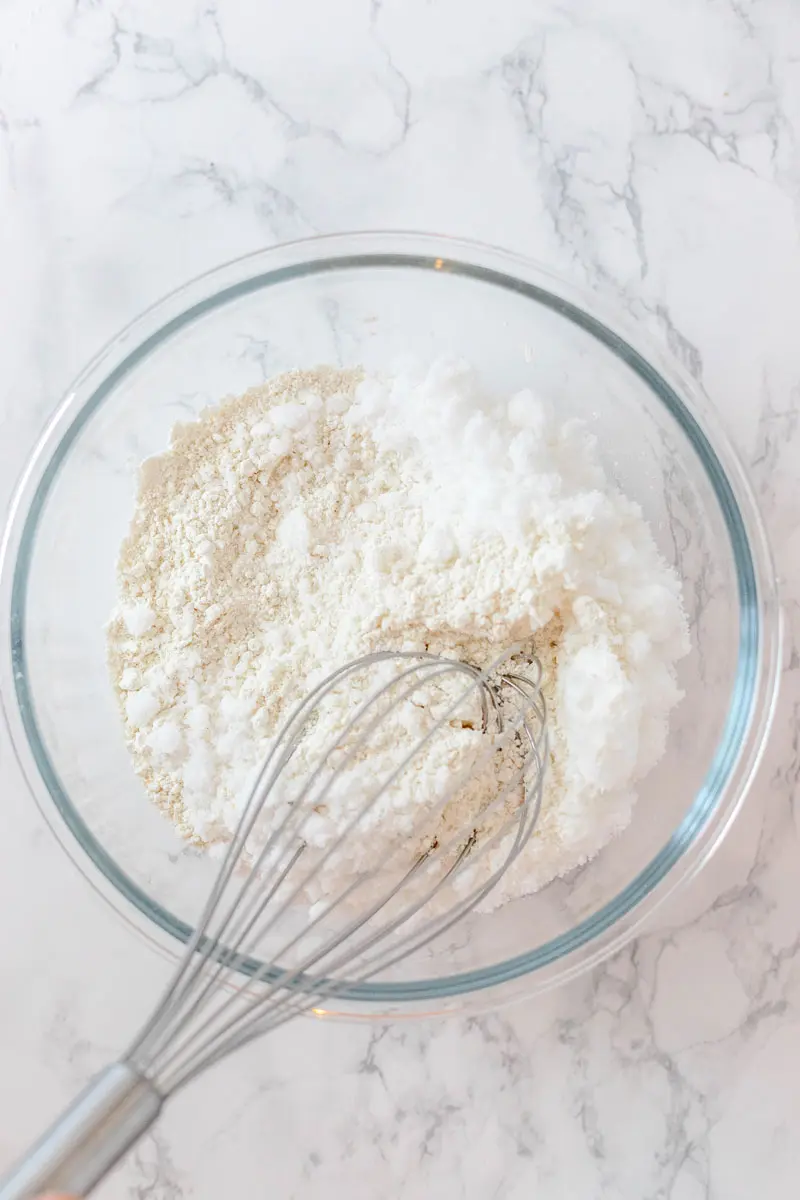
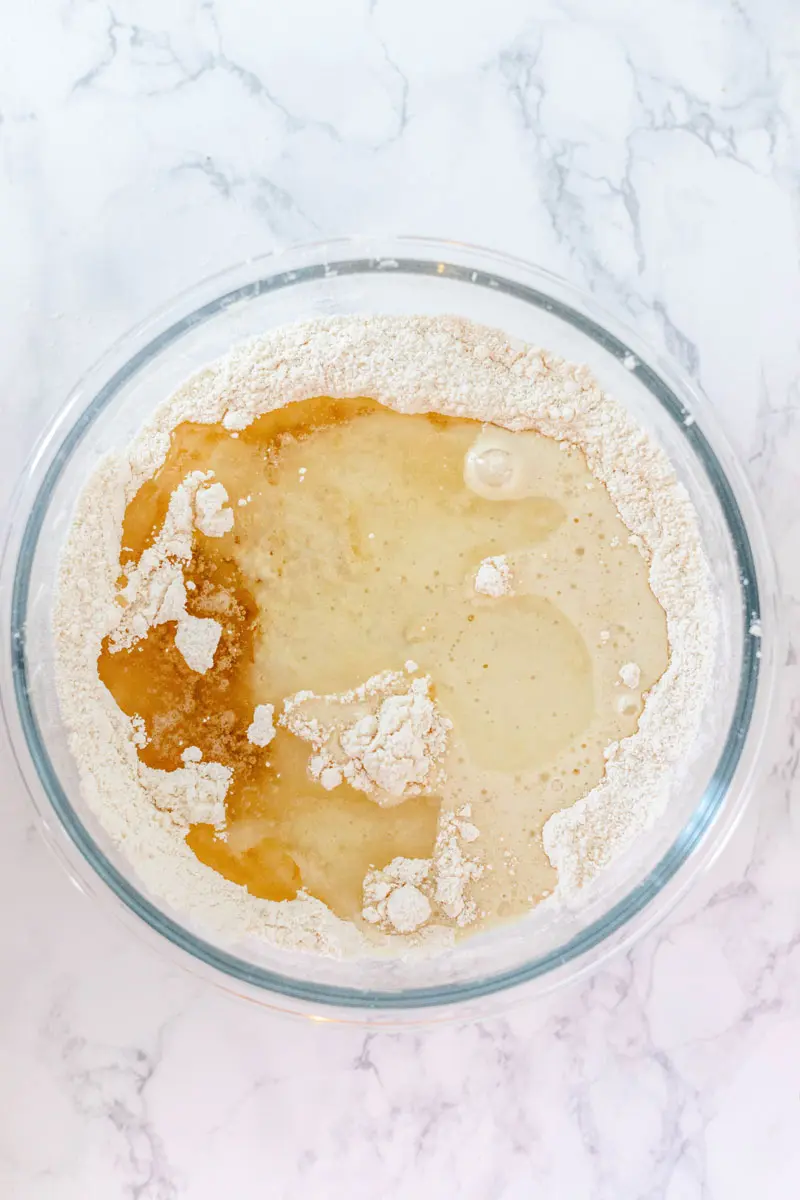
Scale measuring
If you have been making my recipes, you probably have noticed that I always list cup measurements as well as gram measurements. I list both because I want to encourage you to use gram measurement too alongside cup measurement. Gram measurement is way more accurate and mismeasuring is one of the most common ways to make your baked goods turn out…unexpected!
Let’s say you are making a simple muffin recipe with no mix-ins. The recipe you are looking at calls for 2 cups of flour, 1 cup of sugar, 1 cup plant milk and ½ cup oil. You think “oh this looks easy!”. Then you make it and oh…. They don’t raise! They are so dry! Why is this not working! And you are discouraged to bake any more muffins whatsoever. This is exactly what I don’t want you to end up with! There’s a major reason your muffins didn’t turn out the way you expected.
Depending on the way you measure 1 cup, 1 cup of flour can be maybe 100g when someone else’s 1 cup is 150g. That’s a 50g difference in the gram measurement! The same can happen to other ingredients. And after all the measuring you have done with cups thinking that it was all correct, they can end up being dry, too dense, and not tasty muffins if you add 50g of extra flour. Baking is science, and tiny little differences in measurement can affect the final product massively.
Another thing is that recipe creators who make recipes with gram measurements can’t precisely give cup measurements. My 1 cup of flour is usually 110g, but sometimes I want to use 210g of flour in a recipe. And in cup measurement it’s… 2 cups minus 1 tbsp? Or better to say 1 and 9/10 cups…? It’s not only confusing for the recipe creator but even more confusing for the person who is following the recipe.
Conclusion
So for those who are used to cup measurements, my recommendation is to use both cup measurements and gram measurements. What I recommend you do when following a recipe is take each ingredient in cups first, then pour it into a bowl on a digital scale. This way you will get roughly the required amount for each ingredient and then you can adjust the amount by adding or extracting a tablespoon of the ingredient to get the exact amount you need for the recipe. Gram measurement is always better when it comes to baking!
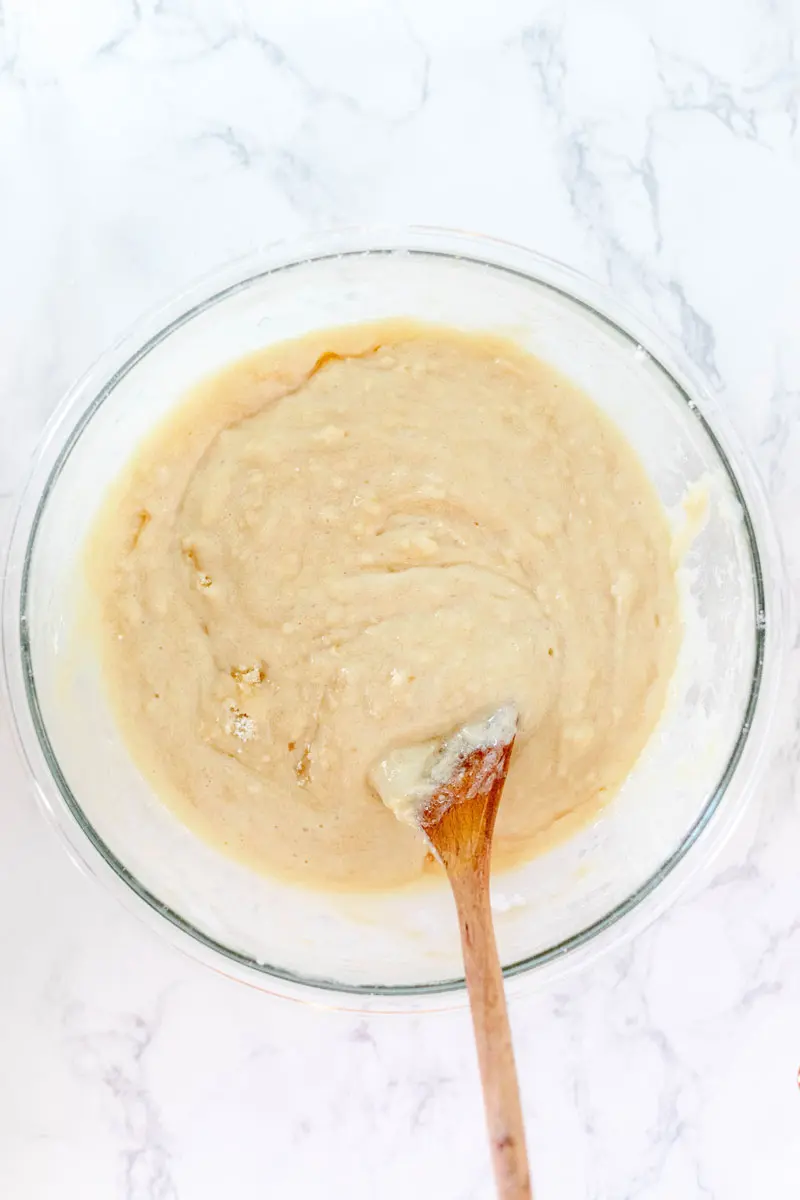
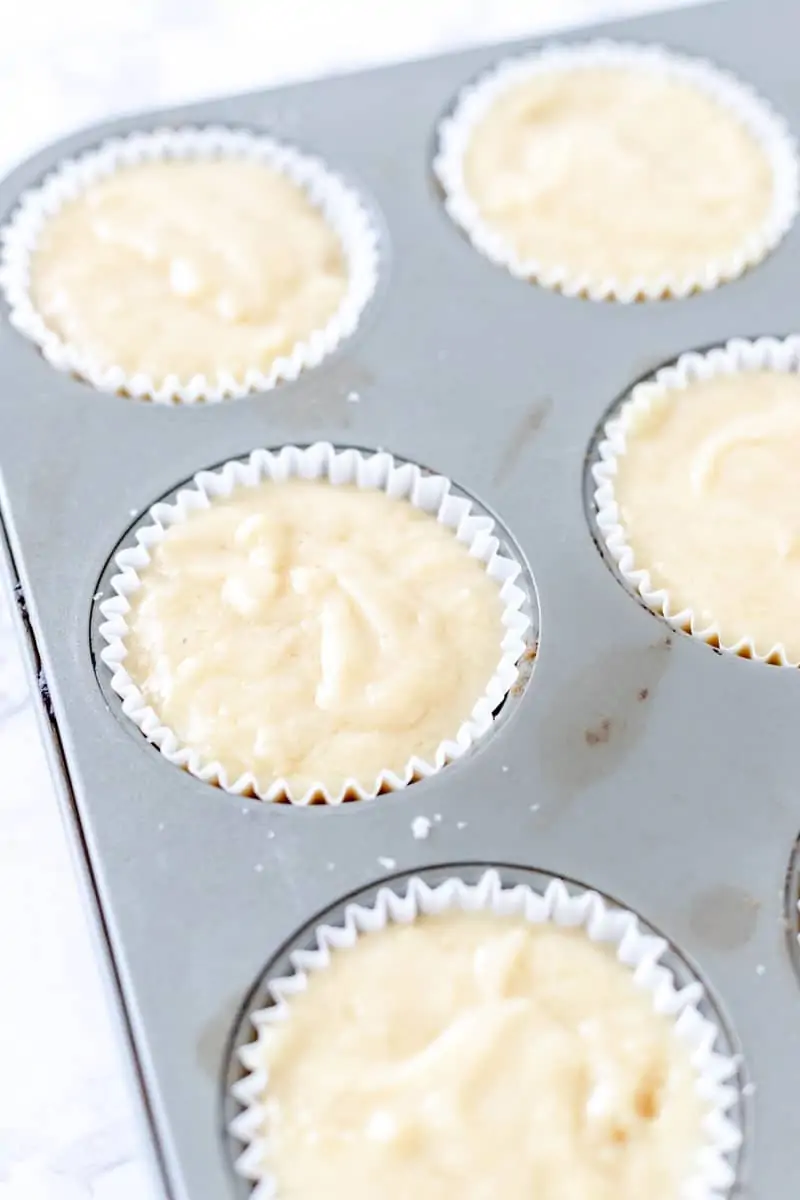
Oil or melted butter
In muffin recipes, oils are used as the main fat. Have you ever wondered why muffin recipes use oil instead of creamed butter? I did! According to Wikipedia, muffins are “baked, individual-sized, cupcake-shaped foods with a “moist, coarse-grained texture”. I couldn’t find any source of the very original recipe of muffins but by reading the definition of muffins, I think oil is used in muffins because it creates a more moist and dense texture in baked goods whereas creamed butter creates a more fluffy texture.
When butter is creamed with an electric mixer, it creates little bubble holes inside the butter which makes baked goods fluffy and less dense(hence less moist). So creamed butter suits better for cakes and cupcakes.
On the other hand, oil doesn’t create bubble holes like creamed butter. So the texture of baked goods with oil is slightly denser and moister, which is ideal for baking muffins. Having said that, you can use melted butter in muffin recipes to create that moist muffin texture too! Simply melting butter and using it in place of oil works perfectly in almost any muffin recipe.
Another major difference between oil and melted butter is the flavour. Vegetable oils such as canola oil have a neutral flavour that goes well with most flours, sugars and mix-ins. Melted butter obviously has a nice buttery flavour and it gives a nice, rich taste to muffins. They both are great fats to use in muffin recipes, so experiment with them and find your favourite way to bake muffins! Make sure that your butter is vegan if you are using butter!

Mix-ins
Like any other baked goods, mix-ins are such a fun part of baking! The great thing about mix-ins for muffins is that you can pretty much throw anything into the batter. Whether it’s good old chocolate chips or fresh raspberries, it’ll make great muffins. Some of the mix-ins you can use in muffins are:
- Chocolate chips
- Blueberries
- Raspberries
- Oreos
- Caramel chips
- Strawberries
- Raisins
- Chocolate chunks
….And more! How fun is it to be able to mix anything you want into your own muffins? So fun!
It is relatively easy to use any mix-ins in muffin recipes, but I hear home bakers struggle with mix-ins so I’m going to cover the major one here.
One of the most popular mix-ins for muffins is blueberries. If you love muffins surely you love blueberry muffins, right? Every so often, I hear from people that their blueberry muffins didn’t go well because the blueberries in muffins sank. I get you, it’s so frustrating to find juicy blueberries only at the bottom of muffins!
How to prevent blueberries from sinking
So how do you prevent blueberries from sinking in muffins? To answer this question, this one small step helps massively – tossing blueberries in flour and coating them lightly before adding them into the batter. That’s it! Try this trick if your blueberries always sink, it should help keep the blueberries from sinking. This trick can be used for any other fruit mix-ins as well such as strawberries or raspberries and so on.
When using fruits as a mix-in for muffins, I recommend you use fresh fruits over frozen. This is because frozen fruits tend to sink in muffins more than fresh fruits. But this doesn’t mean you can’t use frozen fruits in muffins at all, use them if it’s the only option you have. Try the trick and toss your frozen fruits in flour before adding them into the batter too!
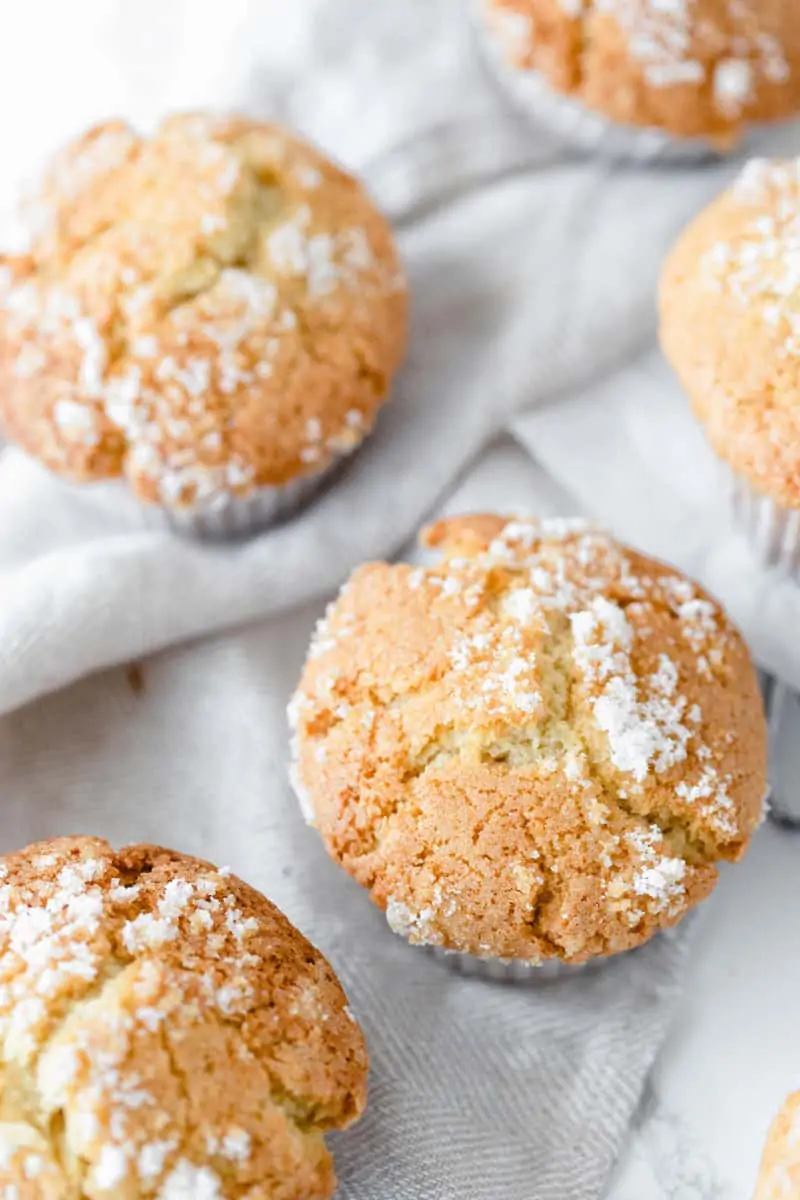
Perfect muffin top tips
If there is anything that I personally don’t want, but is super important in muffins, it’s a muffin top! I used to think, what is the difference between muffins and cupcakes? I thought it through a lot. And I came up with things like cupcakes are sweeter and muffins are more for breakfast, cupcakes have frosting but muffins have mix-ins… etc, etc. But the big difference between cupcakes and muffins for me was whether it has a muffin top or not. Do you agree? Hey bestie, we are officially muffin buddies! Without a muffin top on us, hopefully! So, how do you make those perfectly tall and chubby muffin tops? Here are some tips.
1. No over mixing
It is so tempting to mix the batter with a whisk until it’s completely smooth and silky. And this is a mistake that most beginner bakers make. Mixing is probably the most important process in muffin baking and I will tell you why over mixing is bad.
When you mix your batter with a whisk vigorously until it’s super smooth and silky, you are creating a protein called gluten in the batter. Gluten is naturally found in wheat flours, but it plays the bad guy in muffin batter.. If gluten is developed too much, it makes the muffins tough, way too dense and unexpectedly chewy. Argh, who wants that muffin! The look of the batter might be so pleasing when it’s nice and smooth, but resist the urge and go gently at this stage.
The right approach to mixing muffin batter is to mix with a large, wooden spoon gently until the dry ingredients and wet ingredients are JUST combined. You may see little lumps of flour left in the batter but it’s ok! Don’t worry, it will incorporate nicely in the oven when baked. I listed this as the very first tip because how you mix your muffin batter greatly affects the texture of muffins. So when mixing, always remember to mix gently.
2. Baking soda
Baking powder and baking soda are like siblings with big personality differences. Baking soda is a pure form of sodium bicarbonate and is 4 times stronger than baking powder. Baking soda has to be paired with acid to act as a leavening agent, so mixing baking soda and an acid element such as apple cider vinegar or lemon juice is essential. On the other hand, baking powder already has acid in it so it’s ready to be used just on its own without needing to add acid. Using baking powder alone is enough for muffins to rise tall but if you want that extra puff in your muffins, you can add 1 tsp of baking soda and 1 tsp of either apple cider vinegar or lemon juice and voila! Hello~ muffin top.
3. Resting
This is an essential step in muffin baking that I wish didn’t exist, and that’s the resting stage. I’m just too impatient and want to eat my muffins asap! And I can tell you are feeling the same on the other side of the screen. But, resting muffin batter helps make that perfect tall muffin top as well as the other tips I just shared with you. So just for this step, let’s be patient!
So how does resting muffin batter helps to make perfect muffin tops? When you rest your muffin batter, it relaxes the gluten developed in the batter which results in a softer texture in the final product. Remember I told you earlier how gluten is the bad guy in muffin batter? Resting batter ensures that gluten is relaxed and minimises its effect of it, hence the soft and tall muffin top.
It also allows time for sugar and oil to incorporate well in the batter which results in evenly baked muffins. You can rest your batter for as little time as 15 mins to see the result. Not too bad eh? Rest batter for 30 mins if you have time and patience.
I’m sure you will have a happy smile on your face as the muffins come out of the oven after using these muffin top tips!
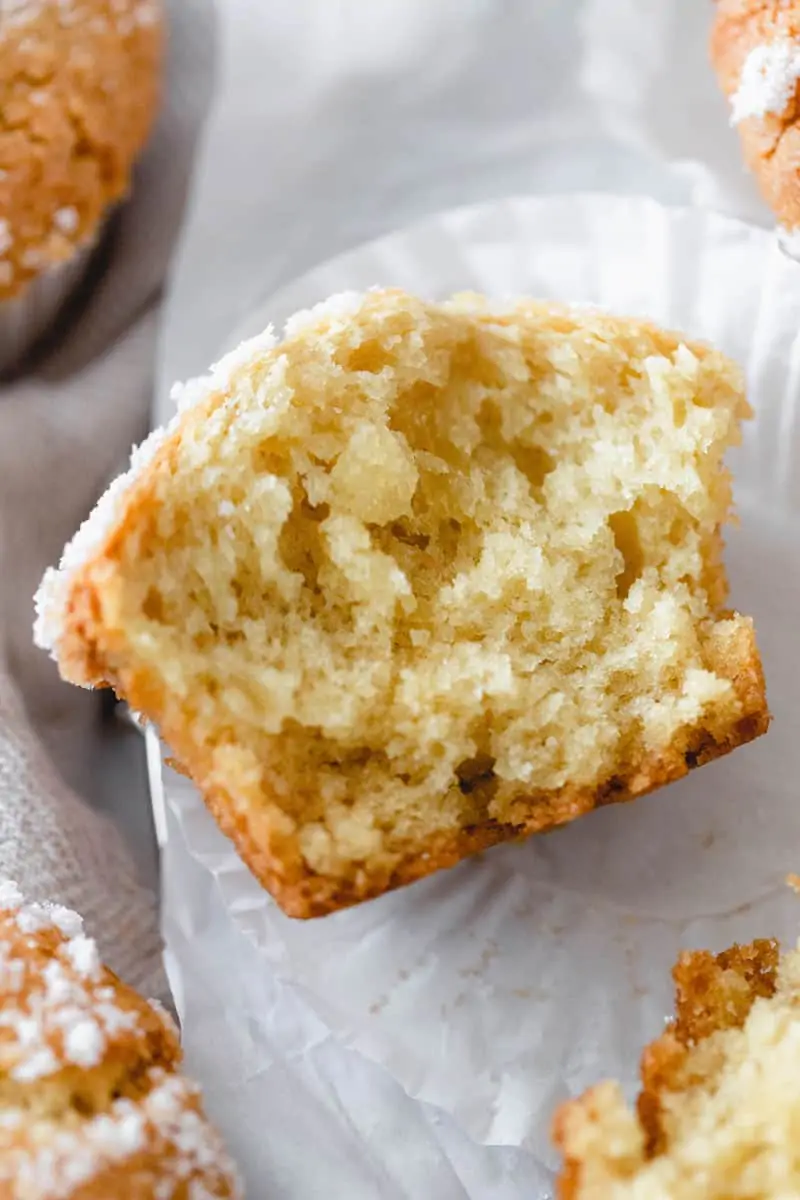
Baking time
Baking time for muffins is around 23-25 mins in general, but it greatly depends on the recipe you are following and each recipe has its own unique character so read the instructions of the recipe you have carefully, and always follow what it says. To see if a muffin is baked or not can be tested with a toothpick. Insert a toothpick in the centre of a muffin, and if it comes out clean it’s nice and baked!
If the toothpick comes out with batter, bake for a further 3-5 mins until it comes out clean. If your muffins are hard and too crispy on the outside, chances are you baked them too long or the temperature of the oven was too high. In general, a good oven temperature to bake muffins is 180°C(350°F). Try baking them 2-3 mins shorter or check if the temperature of your oven is set correctly. Each oven in each household is unique and some old ovens might have lower or higher temperatures than you set. Or maybe your brand new, big, advanced oven has stronger power than the average ovens.
It’s a tricky thing to figure out an oven, but experiment and try different baking times and temperatures. You will find the perfect setting for your oven after a few tries. And most importantly, enjoy the process of experimenting too!
Want to master the basics of vegan baking?
Check out Vegan Baking 101 – the beginner’s guide to vegan baking for you to become an excellent vegan baker and familiar with the basics of vegan baking, ingredients, and techniques with useful tips!
Thank you for reading this muffin guide!
Did you find this vegan muffin guide helpful? Let me know if you did in the comments section! And big news, now you can receive my new ebook The Little Guide to Perfect Muffins for FREE! This ebook has all the tips and tricks you’ve just learned in this post PLUS 3 easy and delicious vegan muffin recipes inside. Hurray! Grab your copy by signing up to The Chestnut Bakery mailing crew today!
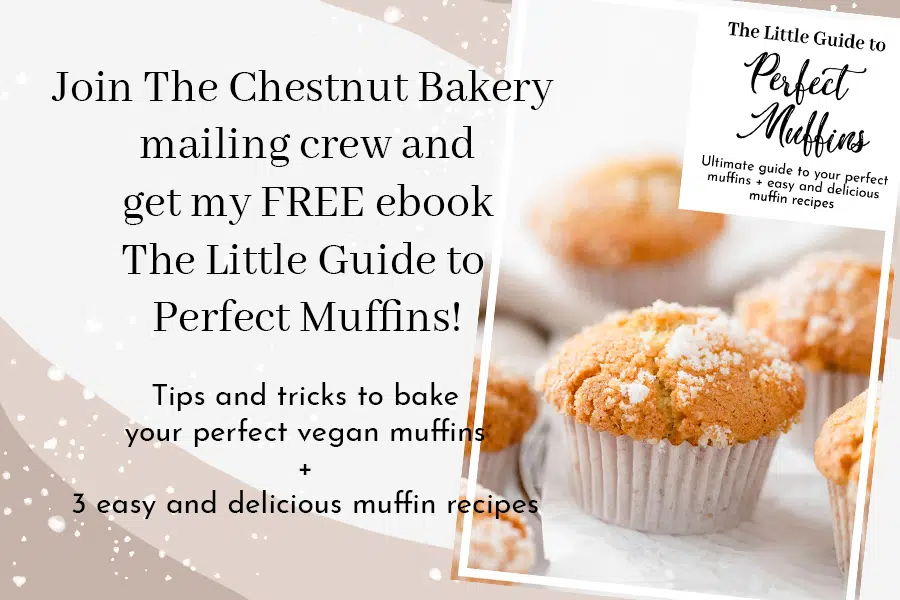
The form you have selected does not exist.
Want muffin recipes to bake?
Try my delicious muffin recipes you might enjoy!
- Lemon Poppy Seed Muffins
- Lemon muffins
- Double chocolate muffins
- Apple cinnamon muffins
- Blueberry Lemon Muffins
- Pumpkin Banana Muffins
Visit the muffins page and recipe page for more delicious recipes!
Here is an easy basic muffin recipe for you to bake using all the tips in this guide. Now go to your kitchen and bake your perfect muffin! Still have questions about baking vegan muffins? Let me know in the comments so that I can help you bake your perfect muffins!
Please leave a comment and rate this recipe in the comment section below if you like this basic vegan muffin recipe! Let me know and tag me @thechestnutbakery on Instagram too. Thank you for making my recipe, friends!
Recipe Card
Print
Basic Vegan Muffin Recipe
- Total Time: 40 minutes
- Yield: 12 muffins 1x
- Diet: Vegan
Description
The simplest, most basic yet delicious vegan muffin recipe! Use all the tips and tricks in the muffin guide and make moist, soft, and fluffy vegan muffins with the perfect muffin top in your kitchen today! Add your favourite mix-ins to make it original too.
Ingredients
- 2 & 1/2 cups (300g) plain flour
- 1 & 1/4 cups (180g) caster sugar + more for sprinkling
- 3/4 cup (180ml) soy milk
- 3/4 cup (180ml) vegetable oil such as canola oil
- 1 tsp apple cider vinegar
- 1 tsp baking powder
- 1 tsp baking soda
Instructions
- Preheat the oven for 180℃(350°F).
- Mix the soy milk and apple cider vinegar to make vegan buttermilk. Set aside.
- In a large bowl, mix well the flour, sugar, baking powder and baking soda with a whisk.
- Add in the vegan buttermilk and vegetable oil and mix gently with a large wooden spoon. Be careful not to over mix. Read the guide for more tips.
- Scoop the batter into muffin cups lined in a muffin tray. Fill the muffin cups about 3/4 leaving some space for the muffins to rise tall. Sprinkle some sugar on top.
- Bake for 23 – 25 mins until an inserted toothpick comes out clean.
- Let it cool and enjoy!
Notes
Read the guide above for useful tips and advices for baking the perfect muffins!
- Prep Time: 15 mins
- Cook Time: 25 mins
- Category: Muffins
- Method: Baking
- Cuisine: American
Nutrition
- Serving Size: 1 muffin
- Calories: 330
- Sugar: 15g
- Sodium: 55mg
- Fat: 18g
- Saturated Fat: 2g
- Unsaturated Fat: 16g
- Carbohydrates: 39g
- Fiber: 4g
- Protein: 5g
- Cholesterol: 0
Pin this recipe for later!
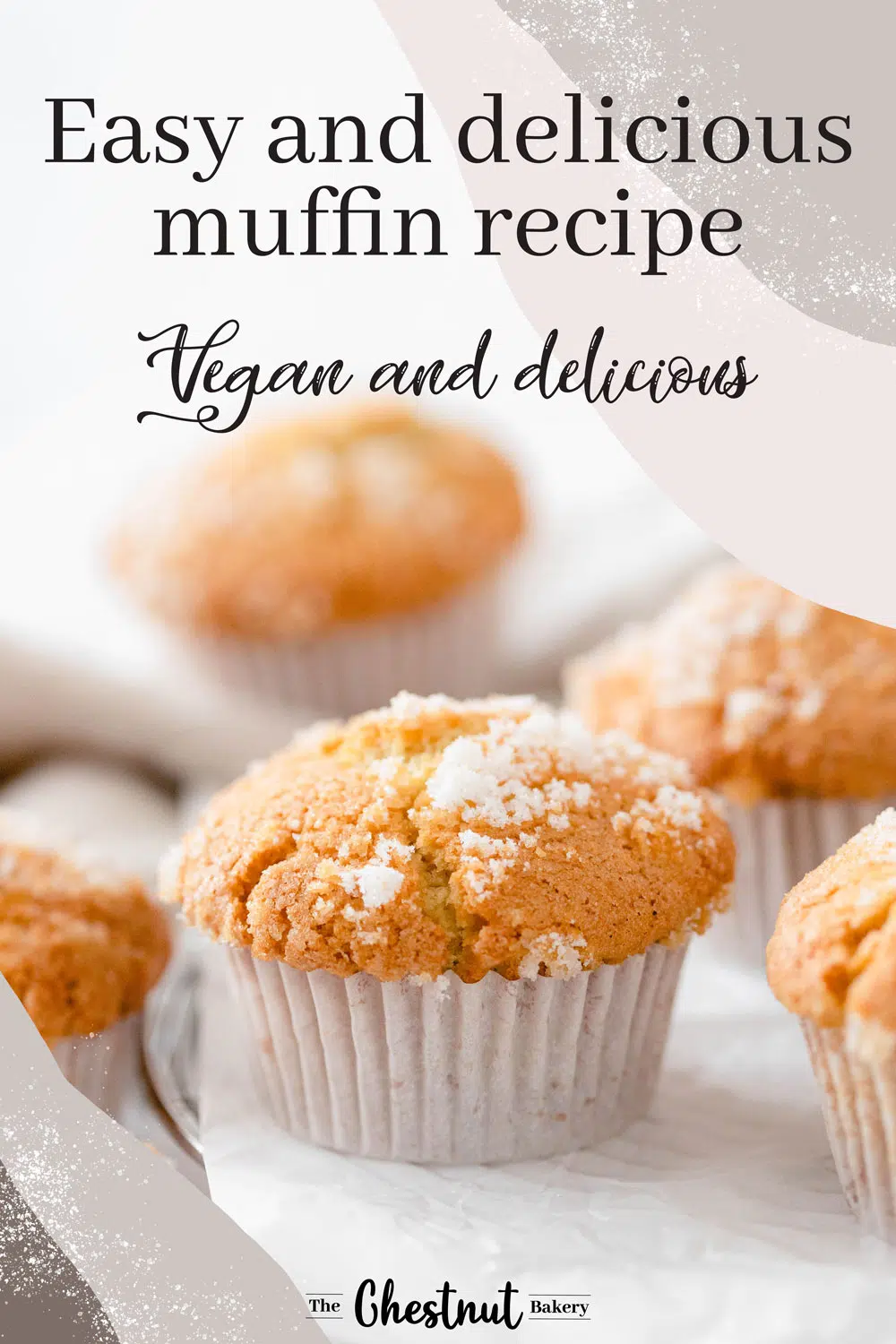

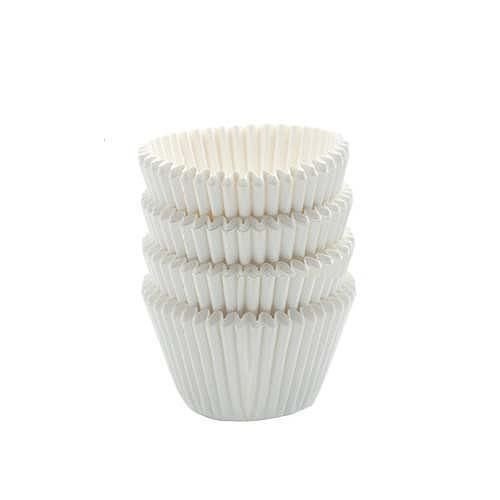
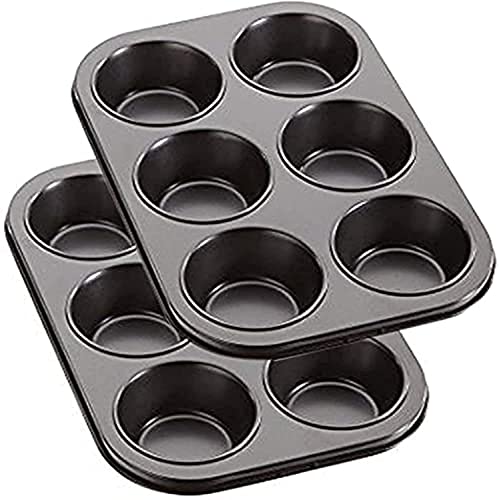




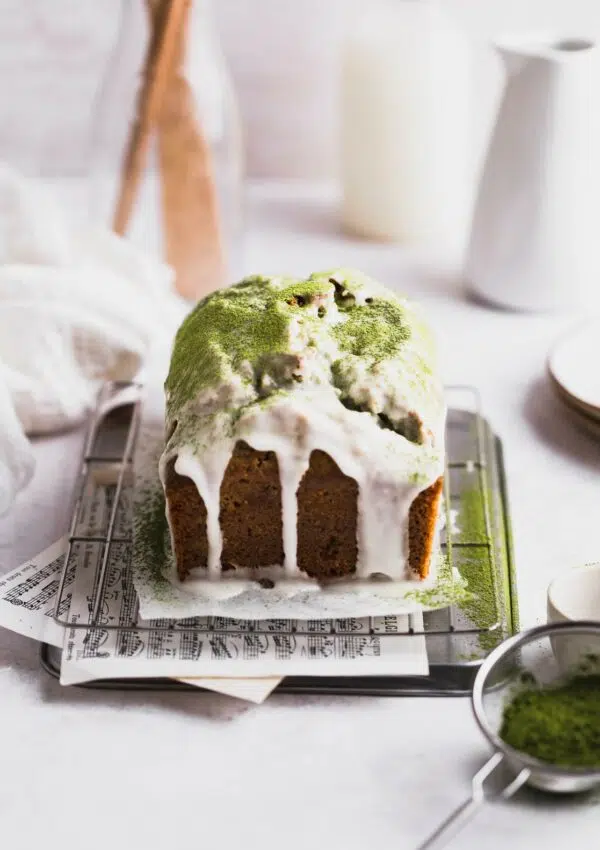
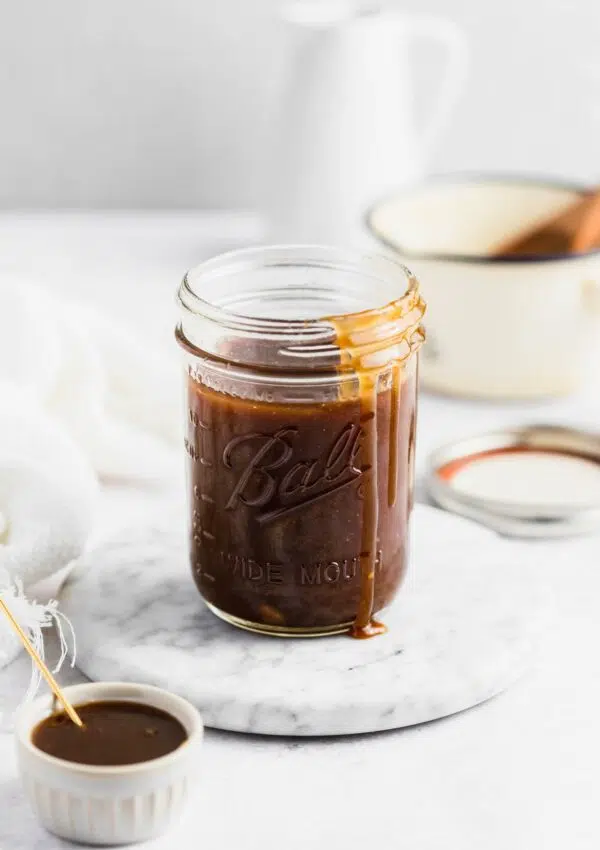
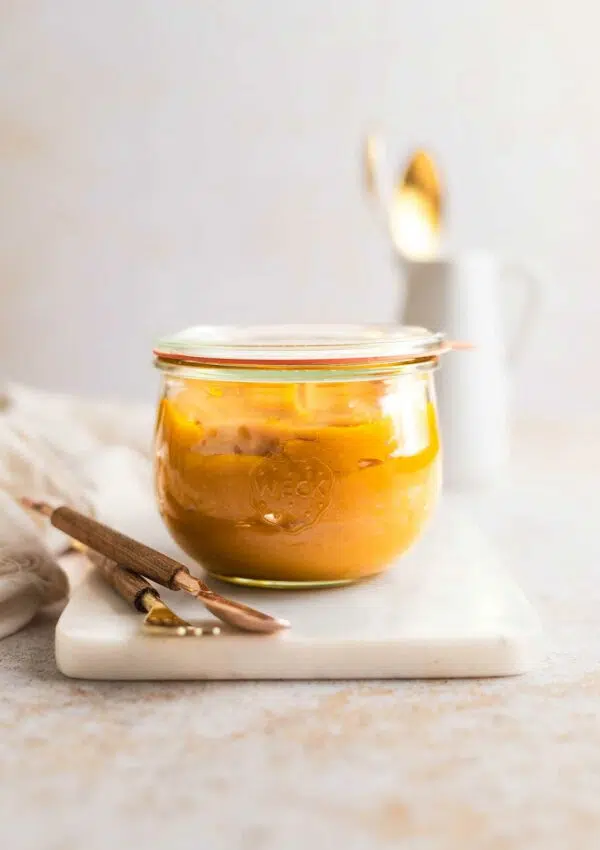

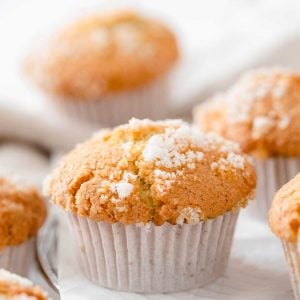
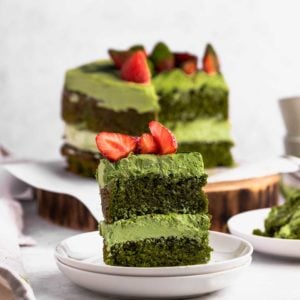
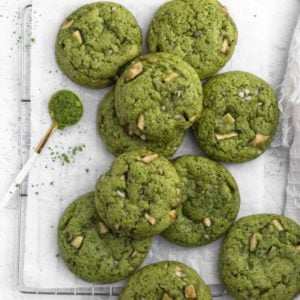
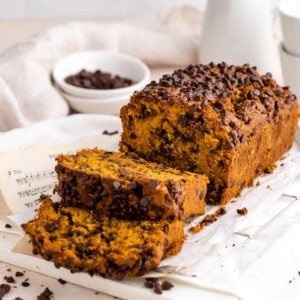
I also love muffins, but I have not been able to overcome the difficulties of making highs and fluffy when they are vegan. I can’t wait to try your tips
Thank you Fabiana! It’s quite easy once you know little tips, you should try them next time you bake vegan muffins 🙂
These look absolutely amazing! I need to give it a try! 🤩
Thank you Sandra! Let me know how it goes when you make them, they are super delicious!
These look fantastic, can’t believe there vegan!
They are so delicious and vegan! So easy to make too you 😉
First of all, yum!!! Love every excuse to bake so will give this a try.
Thank you Derah! Let me know how your muffins turn out 🙂
Excellent tips! I love making muffins for my kiddos, but have never ventured into vegan muffins. Thank you for this in-depth guide 🙂
This recipe would be perfect to bake with your kids over the weekend! Hope you will enjoy.
I love good muffins and bonus if they are vegan, thanks for highlighting that oil is better to use for muffins.
Yes liquid form of fat is better for muffins, in my opinion! Let me know if you try any of the tips in this guide 🙂
Hi,I just read the recipe and it looks fairly easy. How many muffins does this make? 6? 12? Also If I add savory items such as zucchini, will it change the texture, since there’s so much water in zucchini…?
Hi Stacey! Pardon me for not specifying the serving size! It makes about 12 muffins, I updated the recipe card now! Regarding adding zucchini, I have not tried it before so can’t say for certain but if you cut up and squeeze the water out completely with cheese cloth then add it to the batter, I imagine it might work. But because this recipe is not savoury, I can’t say anything about the taste if zucchini is added. Hope this helps, let me know how it goes!
Should you rest the batter in the bowl or in the muffin cups before baking?
Hi Diane! I usually rest the batter in the bowl but you can rest it in the cups as well, either way works. Hope it helps!
Made these for the first time Only alteration is that I added a cup of finely diced apples and 1 tsp. of ground cinnamon. Everyone loved them. Were shocked when I told them that the muffins were vegan. Thank you for your very clear, easy-to-follow recipe.
I’m so glad to hear everyone loved these muffins!
Hello,I just saw this recipe online that had the least ingredients which i like and this is the best tasting,simple vegan muffin recipe I ever had,thank you!
Thank you Jennifer for the comment, I’m so glad to hear that you liked the muffins!
How long do these last before molding?
At room temperature I recommend to consume them within a day, in the fridge 2-3 days, and in the freezer it should keep 1-2 months when properly wrapped and kept in a freezer-friendly airtight container!
I’m SO glad I just found you’re website and I’m really looking forward to trying out this basic muffin recipe and all the add ins! But I’m looking for a muffin recipe I could use for a savory muffin I don’t think this will work with the amount of sugar this recipe calls for so you you have any suggestions?
Hi Cynthia, very sorry for the late reply! I don’t have a basic muffin recipe for savoury muffins at this moment unfortunately, but I will definitely put it in my to-make list and share it with you once I perfect the recipe!
Awesome that would be great I look forward to that!
I added 1/2 tsp salt
Very helpful explanations and tips. Thanks!
So glad to hear it was helpful!
I made this recipe I replaced half the oil with walnut butter and added crumble topping to it. It’s such a perfect base recipe. I also used brown sugar instead of the white sugar, and replaced half the flour with whole wheat.
This base recipe is so useful to make different variations of muffins
I’m so glad to hear that the recipe worked perfectly for you! It’s a fantastic base for any muffin recipes, let me know if you make any other versions I’d love to see/hear it. Thank you for making my recipe!
Your recipe calls for caster sugar….can granulated sugar be substituted instead? I normally use bone-char free pure cane sugar.
Yes, other types of sugar works perfectly in this recipe! Just make sure to weigh your sugar rather than measure with cups, and you are good to go. Hope you’ll like the recipe!